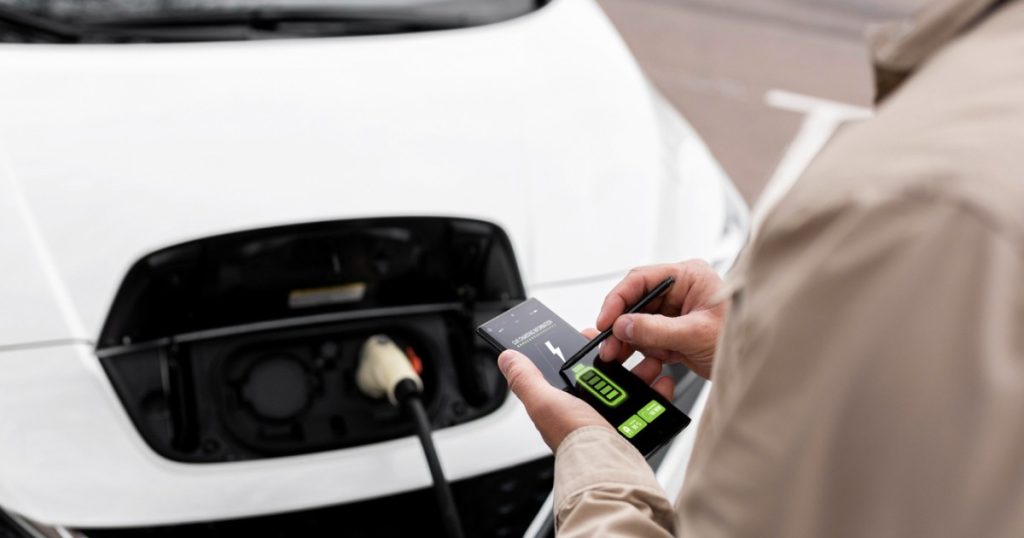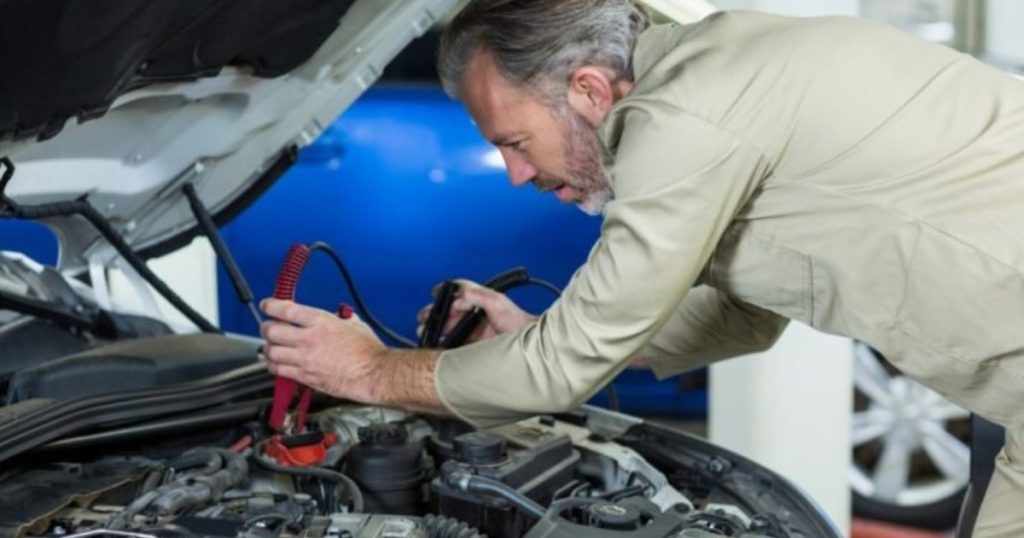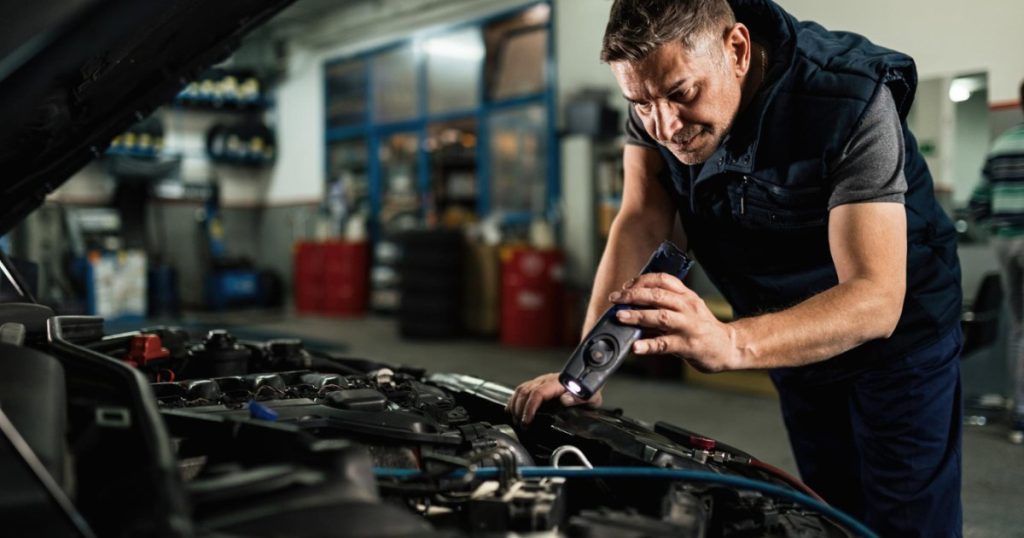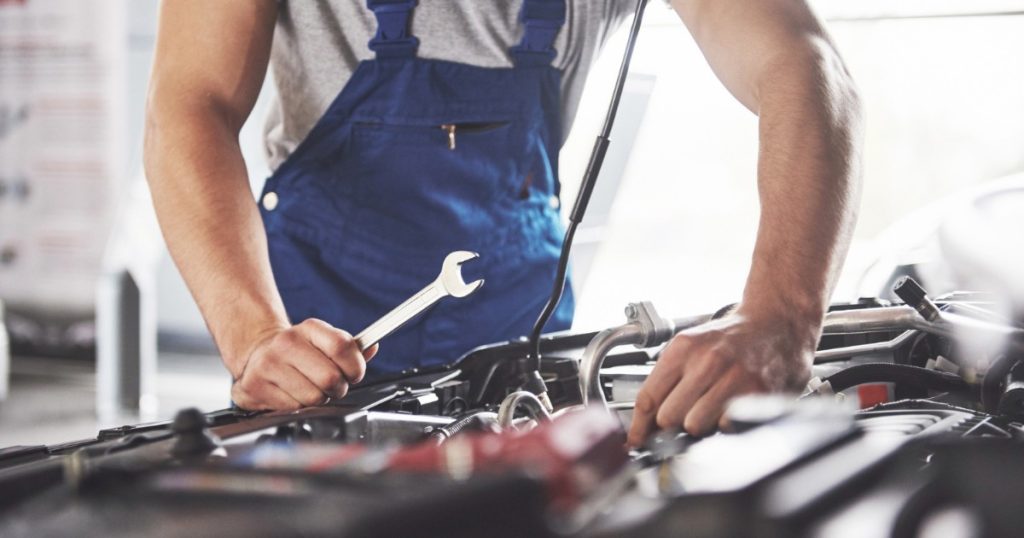Optimizing Power Output: Hybrid Car Battery Performance

Hybrid car batteries are crucial for being eco-friendly. They enable electric propulsion, regenerative braking, and improved fuel efficiency. However, maximizing a hybrid battery’s power output requires understanding its capabilities and driving habits. This article delves into methods to optimize your hybrid battery performance for a greener and more efficient driving experience. Understanding Hybrid Battery Operation: Hybrid batteries, typically lithium-ion, work in tandem with the gasoline engine. They store energy captured during regenerative braking and power the electric motor for low-speed driving and engine restarts. The battery’s health and operating conditions significantly impact power output. Factors Affecting Power Output: Battery Health: Over time, battery capacity degrades, reducing power output. Factors like extreme temperatures, frequent deep discharges, and rapid charging can accelerate this process. Ambient Temperature: Batteries perform best within a moderate temperature range. Very hot or cold weather can make the battery work less well and use less energy. Driving Style: Aggressive acceleration, frequent high-speed driving, and unnecessary use of the gasoline engine strain the battery and decrease power output. Optimizing Power Output for Efficiency: Regenerative Braking Techniques: Practice anticipating traffic flow and using regenerative braking whenever possible. This saves more energy for the battery and means you don’t need to use the gas engine as much. Moderate Acceleration: Avoid aggressive acceleration and maintain a steady cruising speed. This minimizes strain on the battery and optimizes electric motor usage. Preconditioning (Optional): Some hybrids offer preconditioning features that use the gasoline engine to regulate battery temperature before driving. This is good, especially in very hot or cold weather. Utilize Eco Mode: Many hybrids offer an eco mode that optimizes engine and battery usage for fuel efficiency. This mode may limit acceleration but maximizes electric motor use. Maintaining Battery Health for Long-Term Performance: Parking Strategies: Avoid parking in extreme heat or cold whenever possible. Opt for shaded areas or garages for extended parking. Charging Habits: While convenient, frequent fast charging can degrade battery health over time. Utilize standard charging whenever possible for optimal battery longevity. Manufacturer Recommendations: Do what the manufacturer says to take care of the hybrid battery. This might mean getting updates or following certain rules for charging. Tips for Optimizing Hybrid Car Battery Performance It’s important to make sure your hybrid car battery works well to save energy and last longer. Here are some tips for optimizing power output and enhancing the performance of your hybrid car battery: Regular Maintenance: Get regular checks to catch any problems with your hybrid car battery early. This includes monitoring battery health indicators, inspecting charging connectors, and ensuring proper ventilation to prevent overheating. Keep Battery Charged: Maintain the battery charge level within the recommended range to optimize power output. Avoid letting the battery drain completely and aim to recharge it before it reaches a low charge level to prevent damage and maintain performance. Utilize Regenerative Braking: Use the brakes that save energy to collect and keep the energy made when you brake. This energy can then be used to recharge the battery, reducing the need for external charging and enhancing overall efficiency. Drive Efficiently: Adopting energy-efficient driving habits can help optimize power output from your hybrid car battery. Drive smoothly, keep a steady speed, and don’t let the car sit and run for no reason to save energy and make the battery last longer. Avoid Extreme Temperatures: Very hot or cold weather can make the battery work less well and use less energy. Avoid exposing the battery to prolonged periods of extreme heat or cold, as it can lead to degradation and reduced power output. Park in shady spots or garages when you can keep the battery from getting too hot or cold. Optimize Charging Times: Charge your hybrid car battery when electricity costs less, usually at times when fewer people are using it. Additionally, consider using programmable charging timers to start and stop charging at optimal times, maximizing efficiency and reducing charging costs. Monitor Battery Health: Regularly monitor the health of your hybrid car battery and address any issues promptly. Keep an eye on battery health indicators and seek professional maintenance if you notice any signs of degradation or performance decline. By maintaining battery health, you can ensure optimal power output and prolong battery lifespan. The Benefits of Optimization: By optimizing your hybrid battery performance, you can achieve: Increased Fuel Efficiency: A well-maintained and efficiently operated battery reduces reliance on the gasoline engine, leading to significant fuel savings. Reduced Emissions: Lower fuel consumption translates to a smaller carbon footprint and a cleaner driving experience. Extended Battery Life: Taking good care of your hybrid battery and driving carefully can make it last longer, so you don’t have to spend money on a new one. Additional Considerations: Climate Control: Excessive use of climate control systems can strain the battery, especially in extreme temperatures. Utilize these features efficiently to minimize impact. Accessory Usage: Avoid unnecessary accessory usage like heated seats or phone chargers while relying solely on electric power. These can drain the battery faster. FAQs How often should I get my hybrid car battery checked? It’s recommended to schedule maintenance checks for your hybrid car battery at least once every six months or as recommended by the manufacturer. Regular checks help identify potential issues early on and ensure optimal performance. How do I know if my hybrid car battery needs fixing or replacing? Signs that your hybrid car battery may need maintenance or replacement include decreased fuel efficiency, warning lights or indicators on the dashboard, difficulty starting the vehicle, and reduced driving range. If you see any of these signs, it’s a good idea to have a professional check your battery. Can I overcharge my hybrid car battery? Modern hybrid car batteries are equipped with built-in management systems to prevent overcharging. However, it’s still essential to follow manufacturer recommendations and avoid leaving the vehicle plugged in for extended periods unnecessarily. Charging too much can make the battery work less well and not last as long.
Hybrid Car Battery Replacement Guide: What You Need to Know

Hybrid cars have become increasingly popular in recent years because of their environmentally friendly design and fuel efficiency. These vehicles operate using both an internal combustion engine and an electric motor, leading to lower emissions and increased fuel economy. However, one crucial component of hybrid cars that requires attention is the battery system. Signs of a Failing Hybrid Car Battery Hybrid car batteries play a vital role in powering the electric motor and supporting the internal combustion engine. Decreased Fuel Efficiency A prominent early indicator of a declining hybrid car battery is a noticeable drop in fuel efficiency. As the battery loses its ability to hold a charge, the vehicle may rely more heavily on the gasoline engine, resulting in higher fuel consumption. Observing gas mileage and taking note of any substantial decreases can aid in detecting potential battery issues. Engine Light Turns On The check engine light serves as a warning indicator for various vehicle issues, including potential battery problems. If the check engine light turns on, it’s crucial to have the vehicle examined by a certified technician. Neglecting warning signs can result in additional damage and more costly repairs in the future. Loss of Power and Acceleration A failing hybrid car battery can also manifest as a loss of power and acceleration. When the battery struggles to provide sufficient power to the electric motor, the vehicle may feel sluggish and unresponsive during acceleration. Addressing performance issues promptly can prevent further deterioration of the battery system. Reduced Battery Life Indicator Many hybrid vehicles are equipped with battery life indicators that provide information about the health of the battery system. If the battery life indicator shows a significant decrease in capacity, it may indicate a failing battery. Ignoring these warnings can result in unexpected battery failure and vehicle breakdowns. Engine Stalling or Difficulty Starting In severe instances, a failing hybrid car battery might lead to the engine stalling or make it challenging to start the vehicle. These symptoms indicate a significant battery-related issue that requires immediate attention. Ignoring starting problems can leave you stranded and necessitate costly repairs. Types of Hybrid Car Batteries Hybrid vehicles employ various battery types, such as nickel-metal hydride (NiMH) and lithium-ion (Li-ion) batteries. Each type has its own set of advantages and disadvantages, with NiMH batteries being more common in older hybrid models and Li-ion batteries becoming increasingly prevalent in newer models. Factors to Consider Before Replacement Before delving into the replacement procedure, it’s crucial to grasp the importance of evaluating different factors. Age and Mileage of the Vehicle One of the primary considerations before replacing a hybrid car battery is the age and mileage of the vehicle. Older vehicles with greater mileage might experience more significant battery degradation, making replacement a more urgent matter. Battery Health and Degradation Assessing the health status and degradation of the existing battery is crucial. Signs such as decreased fuel efficiency and reduced performance indicate that the battery may need replacement. Cost of Replacement Replacing a hybrid car battery can be a significant investment. It’s essential to consider factors such as the cost of the battery itself, installation fees, and any additional expenses associated with the replacement process. Warranty Coverage Checking warranty coverage is vital before replacing a hybrid car battery. Certain manufacturers provide extended warranties for hybrid batteries, which can substantially lower replacement expenses. Compatibility and Performance Ensuring compatibility with the vehicle’s make and model is essential when choosing a replacement battery. Moreover, assessing the performance specifications of replacement options ensures optimal performance and efficiency. Environmental Impact Considering the environmental impact of replacement choices is increasingly important. Opting for sustainable and eco-friendly battery replacement options can minimize environmental harm. DIY vs. Professional Replacement While some car owners may consider replacing the hybrid car battery themselves to save costs, others prefer hiring a professional technician for the job. DIY replacement requires technical expertise and specialized tools, whereas professional replacement ensures proper installation and warranty coverage. Steps for Hybrid Car Battery Replacement For those considering DIY replacement, following a step-by-step guide is essential to ensure a successful outcome. The process involves disconnecting the old battery, installing the new battery, and resetting the vehicle’s onboard computer system to recognize the new battery. Maintenance Tips for Hybrid Car Batteries To prolong the lifespan of hybrid car batteries, regular maintenance is crucial. This involves avoiding deep discharges, maintaining the battery’s coolness, and arranging regular inspections with a certified technician. Adhering to these maintenance tips can enhance the lifespan and performance of hybrid car batteries.
Cost-Efficiency of Hybrid Car Batteries Explained

In today’s automotive landscape, the push towards sustainability and energy efficiency has led to the widespread adoption of hybrid vehicles. At the heart of these vehicles lies the hybrid car battery, a critical component that determines not only the performance but also the cost-effectiveness of these eco-friendly rides. Introduction to Hybrid Car Batteries Hybrid car batteries serve as the power source for electric motors in hybrid vehicles, supplementing or replacing the traditional internal combustion engine. These batteries store energy generated through regenerative braking and engine power, providing an additional boost when needed and allowing the vehicle to operate more efficiently, with reduced emissions compared to conventional vehicles. Types of Hybrid Car Batteries Hybrid vehicles come equipped with different types of batteries, each offering distinct characteristics and performance capabilities. Understanding the differences between these battery types is essential for consumers seeking the most suitable hybrid vehicle for their needs. The two primary types of hybrid car batteries in use today are Nickel-Metal Hydride (NiMH) batteries and Lithium-ion (Li-ion) batteries. Nickel-Metal Hydride (NiMH) Batteries For decades, Nickel-Metal Hydride (NiMH) batteries have served as a cornerstone in the hybrid vehicle industry. These batteries utilize a combination of nickel oxide hydroxide and metal hydride as electrodes, along with potassium hydroxide as the electrolyte. NiMH batteries are well-known for their reliability, durability, and affordability, rendering them a favored option among automakers. A primary benefit of NiMH batteries is their comparatively lower cost in comparison to alternative battery technologies. Additionally, NiMH batteries boast a proven track record of performance and safety, providing peace of mind to consumers concerned about reliability. Lithium-ion (Li-ion) Batteries Lithium-ion (Li-ion) batteries represent the latest advancements in hybrid car battery technology, offering higher energy density, lighter weight, and improved performance compared to NiMH batteries. Li-ion batteries utilize lithium cobalt oxide, lithium iron phosphate, or other lithium-based compounds as electrodes, with a liquid or solid electrolyte facilitating ion movement. A key benefit of Li-ion batteries lies in their superior energy density, enabling more efficient energy storage within a compact and lightweight structure. This results in extended driving ranges and enhanced fuel efficiency for hybrid vehicles utilizing Li-ion batteries. Cost-Efficiency in Hybrid Car Batteries When considering hybrid vehicles, one of the critical factors for consumers is the cost-efficiency of their batteries. Here are few points discussed below. Initial Cost Comparison The initial price of hybrid car batteries fluctuates depending on the type and technology employed. Generally, Lithium-ion (Li-ion) batteries tend to have a higher upfront cost compared to Nickel-Metal hydrogen (NiMH) batteries due to their advanced technology and higher energy density. However, this initial investment needs to be evaluated in the context of long-term cost savings. Long-Term Cost Analysis Although Li-ion batteries might entail a higher initial investment, their extended lifespan and enhanced energy efficiency frequently result in substantial savings throughout the vehicle’s lifetime. Factors such as reduced fuel consumption and lower maintenance costs contribute to the overall cost-efficiency of Li-ion batteries in hybrid vehicles. Factors Affecting Cost-Efficiency Understanding the factors affecting cost-efficiency is essential for evaluating the economic viability of hybrid car batteries and making informed purchasing decisions. Battery Lifespan The lifespan of hybrid car batteries plays a crucial role in determining their cost-efficiency Li-ion batteries generally offer a lengthier lifespan than NiMH batteries, thereby offering greater value over time. Maintenance and Replacement Costs Hybrid car batteries need very little maintenance in comparison to traditional internal combustion engines. However, in the event of battery degradation or failure, replacement costs can impact the overall cost-efficiency of hybrid vehicles. Fuel Savings One of the main advantages of hybrid vehicles is their lower fuel consumption compared to conventional vehicles. The integration of efficient hybrid car batteries contributes to significant fuel savings over the lifetime of the vehicle, enhancing its overall cost-efficiency. Advantages of Cost-Efficient Hybrid Car Batteries Exploring the benefits of cost-efficient hybrid car batteries reveals their significant contributions to environmental sustainability, economic savings for consumers, and technological advancements in the automotive industry. Environmental Benefits The adoption of cost-efficient hybrid car batteries contributes to a reduction in greenhouse gas emissions and dependence on fossil fuels, promoting environmental sustainability and mitigating climate change. Economic Savings for Consumers Cost-efficient hybrid car batteries translate into tangible economic savings for consumers, both in terms of reduced fuel expenses and lower maintenance costs, making hybrid vehicles a financially viable option for environmentally conscious individuals. Technological Advancements The pursuit of cost-efficiency in hybrid car batteries drives technological innovations in battery technology, leading to improved performance, increased energy density, and enhanced reliability, further bolstering the appeal of hybrid vehicles in the market. Challenges and Limitations Hybrid car batteries face challenges due to their environmental impact and costs. To address these issues, effective recycling methods and adapting to evolving battery technology are crucial for sustainability and affordability in the automotive industry. Recycling and Disposal Concerns While hybrid car batteries offer numerous advantages, their disposal at the end of their lifespan poses environmental challenges. It is essential to employ appropriate recycling and disposal methods to mitigate the environmental impact of hybrid vehicle batteries. Technology Advancements Impacting Costs The swift progression of technological advancements in battery technology could impact the cost-effectiveness of hybrid car batteries. While these advancements promise improved performance and efficiency, they may also entail higher initial costs. Future Prospects Future Prospects: New battery technologies and cost-cutting efforts mean good things ahead for hybrid car batteries. They’ll perform better, last longer, and become more affordable, encouraging more people to use them and making the auto industry more sustainable. Emerging Battery Technologies The outlook for hybrid car batteries appears promising as advanced battery technologies like solid-state batteries and lithium-sulfur batteries emerge, promising higher energy density, extended lifespan, and improved safety features. Cost Reduction Strategies Ongoing research and development efforts focus on cost-reduction strategies for hybrid car batteries, including improving manufacturing processes, optimizing battery materials, and streamlining supply chains, ultimately driving down costs and making hybrid vehicles more accessible to a wider audience.
Understanding the Longevity of Hybrid Car Batteries

Hybrid car batteries are really important for making hybrid cars work well. They’re like power packs that mix regular engines with electric motors. This combo helps cars use less fuel and produce fewer emissions, making them better for the environment. However, one critical aspect that often concerns potential buyers is the longevity of hybrid car batteries. We look into the things that affect how long these batteries last and share tips on making them last longer. Factors Affecting Longevity Understanding the factors that affect the longevity of batteries is essential for optimizing their performance and lifespan. Battery Chemistry Battery chemistry is a primary factor influencing battery lifespan. Various kinds of batteries like lithium-ion (Li-ion), nickel-metal hydride (NiMH), and lead-acid have different traits that influence how long they last. Li-ion batteries, for example, are known for their high energy density but may degrade faster over time compared to NiMH batteries. Understanding the chemistry of the battery can help users implement appropriate maintenance practices to extend its lifespan. Usage Patterns The way a battery is used also significantly impacts its longevity. Factors such as charging frequency, depth of discharge, and operating temperature can affect battery health. Letting the battery drain a lot and charging it quickly can make the battery wear out faster. But if you keep the battery charged between certain levels, it can last longer. Also, keeping the battery clean and giving it enough air is important to make sure it works well. Environmental Conditions Hot weather or humidity can affect how long a battery lasts. When it’s really hot, the battery’s chemicals can react faster, which makes the battery wear out quicker. Similarly, exposure to extreme cold can reduce battery efficiency and capacity. It’s essential to store and operate batteries within the manufacturer’s recommended temperature range to maximize their lifespan. Maintenance Practices Regular maintenance is crucial for extending the battery lifespan. This includes performing routine inspections, cleaning terminals, and ensuring proper ventilation. Also, it’s a good idea to follow the instructions from the manufacturer on how to charge and use the battery. This helps keep the battery in good shape. Overcharging or allowing the battery to remain at a low state of charge for extended periods can lead to irreversible damage. By adopting proactive maintenance practices, users can maximize the lifespan of their batteries. Technological Advancements Advancements in battery technology continue to improve battery longevity and performance. Innovations such as solid-state batteries, graphene-based electrodes, and advanced electrolytes promise to deliver longer-lasting and more efficient batteries. These technological advancements are paving the way for a future where batteries can power vehicles and devices for extended periods without compromising performance. Maximizing Battery Longevity Making batteries last a long time is really important for making sure they work well and use less energy. By doing certain things to take care of them and keeping them in good condition, people can make batteries last much longer. Here are some important ways to make batteries last longer: Proper Charging Techniques: Avoid deep discharges and excessive fast charging, as these can accelerate battery degradation. Instead, aim to keep the battery within its optimal state of charge range and avoid fully depleting it whenever possible. Utilize slow or trickle charging methods whenever feasible to minimize stress on the battery. Optimal Operating Conditions: Make sure to use the battery in the temperature range the manufacturer suggests. Hot or cold temperatures can make the battery not work as well and not last as long. Store and operate the battery in a cool, dry environment to minimize exposure to temperature extremes. Regular Maintenance: Perform routine maintenance tasks, such as cleaning terminals and inspecting for signs of corrosion or damage. Make sure to clean the battery and keep it free from dirt, as dirt can stop it from working right. Also, make sure there’s enough air around the battery so it doesn’t get too hot. Avoiding Overcharging: Overcharging the battery can lead to overheating and premature degradation. Use chargers that have safety features, like turning off by themselves, to stop the battery from getting overcharged. When the battery is fully charged, unplug it from the charger to keep it from getting damaged. Storage Practices: When storing batteries for an extended period, ensure they are properly charged and maintained. Don’t leave batteries completely empty, as this can ruin them permanently. Store batteries in a cool, dry spot where it’s not too hot or too cold, and away from the sun. Common Misconceptions Despite the benefits of modern battery technology, there are several common misconceptions surrounding battery longevity. Addressing these misconceptions is essential for ensuring that users have accurate information about how to care for their batteries properly. Here are some of the most prevalent misconceptions: Overcharging Extends Battery Life: Contrary to popular belief, overcharging a battery can shorten its lifespan. Leaving a battery plugged in for too long can make it too hot and harm the cells. It’s important to unplug the battery when it’s fully charged to stop it from getting overcharged. Fully Discharging Improves Battery Health: While it’s true that some battery chemistries benefit from occasional deep discharges, fully discharging a battery regularly can be detrimental to its longevity. Letting the battery drain completely can harm the cells and should only be done when needed. Leaving Batteries Plugged in Is Harmless: Leaving batteries plugged in continuously, especially when they are fully charged, can contribute to overcharging and reduce battery lifespan. Make sure to disconnect devices from chargers when they’re fully charged to avoid putting extra strain on the battery. Storing Batteries in the Freezer Extends Lifespan: While storing batteries in the freezer may slow down chemical reactions and reduce self-discharge, it can also cause damage due to moisture buildup and extreme temperatures. It’s best to store batteries in a cool, dry place at room temperature. Using Off-Brand Chargers Is Safe: Using off-brand or third-party chargers may seem like a cost-effective solution, but it can pose risks to battery health and safety. Off-brand chargers may not have the necessary
